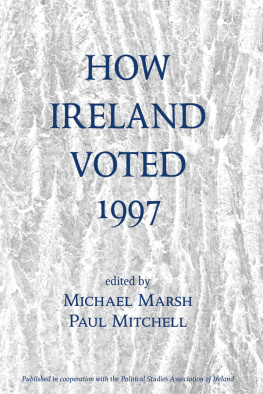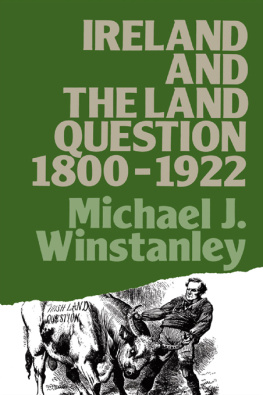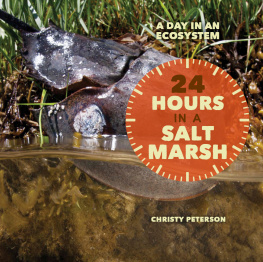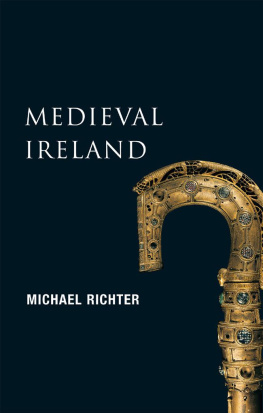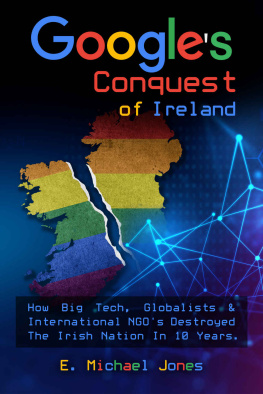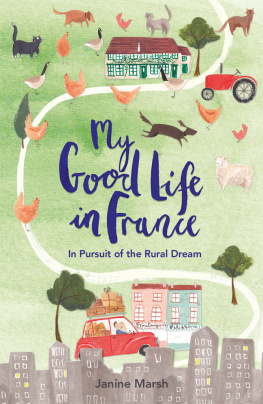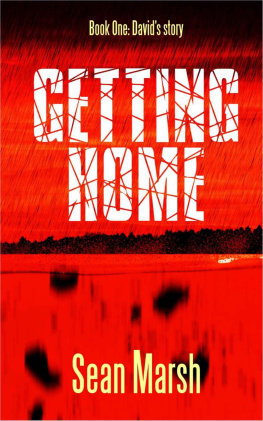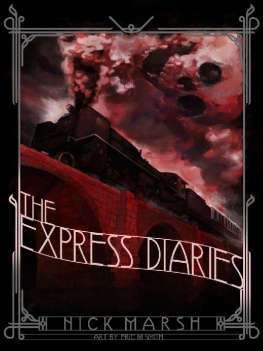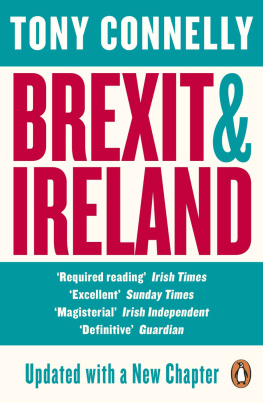How Ireland Voted
1997
Studies in Irish Politics
Michael Marsh, Series Editor
How Ireland Voted 1997,
edited by Michael Marsh and Paul Mitchell
Contesting Politics: Women in Ireland, North and South,
edited by Yvonne Galligan, Eils Ward, and Rick Wilford
Politics in Northern Ireland,
edited by Paul Mitchell and Rick Wilford
Published in cooperation with
Political Studies Association of Ireland
Studies in Irish Politics
First published 1999 by Westview Press
Published 2018 by Routledge
711 Third Avenue, New York, NY 10017, USA
2 Park Square, Milton Park, Abingdon, Oxon OX14 4RN
Routledge is an imprint of the Taylor & Francis Group, an informa business
Copyright 1999 Taylor & Francis
All rights reserved. No part of this book may be reprinted or reproduced or utilised in any form or by any electronic, mechanical, or other means, now known or hereafter invented, including photocopying and recording, or in any information storage or retrieval system, without permission in writing from the publishers.
Notice:
Product or corporate names may be trademarks or registered trademarks, and are used only for identification and explanation without intent to infringe.
A CIP catalog record for this book is available from the Library of Congress.
ISBN 13: 978-0-8133-3218-5 (pbk)
ISBN 13: 978-0-8133-3217-8 (hbk)
Contents
Part 1
The Campaign
, Brian Girvin
, Michael Holmes
, Yvonne Galligan
, John Garry and Lucy Mansergh
, Charles Flanagan and Niamh Bhreathnach
Part 2
Results, Analysis, Aftermath
, Michael Gallagher
, Michael Marsh and Richard Sinnott
, Mary-Clare OSullivan
, John Coakley and Maurice Manning
, Michael Marsh
, Paul Mitchell
, Michael Lover
In 1997, for the first time in ten years, Ireland held a general election on schedule. Unlike its three immediate predecessorsand contrary to some forecasts at its inception in November 1994the Fine Gael-Labour-Democratic Left Rainbow government did not implode in coalition wrangles and squabbles among its leaders. Instead it died a natural death by entering the final year of the twenty-seventh Dails prescribed maximum term. At the start of 1997 everyone knew that this would be an election year. Since a snap election catching the opposition unaware and unprepared was no longer really feasible, all parties had plenty of time to plan for the forthcoming showdown. Since the election was so long anticipated, each party had its best opportunity for many years to optimise its strategy, alliances, policies, organisation, and selection of candidates.
This edition of How Ireland Voted devotes several chapters to those campaign preparations. Brian Girvin begins in , Yvonne Galligan takes up the fascinating story of one of the hidden aspects of elections, the process by which parties select their candidates. On occasion these battles can be every bit as hard fought as the general election. She emphasises the delicate balance between the central and local interests of each party in nomination strategy and shows how Fine Gael energised its selection conventions in 1997 by adopting one member, one vote for the first time.
In ). One had the satisfaction of being comfortably reelected to the Dil; the other suffered the agony of losing not only her job in government but also her seat in parliament.
Unlike in recent elections, no observers could reasonably claim that the 1997 contest broke the mould of Irish politics, swept away the old order, or presaged a fundamental realignment of the party system. The 1997 election was more like a return to business as usual as the two largest parties bounced back from their collective nightmare in 1992. This time Fianna Fil at least halted its decline in votes and improved its parliamentary strength by nine seats; Fine Gael significantly improved its share of the votes as well as picking up nine additional seats. The Labour Party, however, was cut in half, lost virtually all of its 1992 gains, and fell to just below its historic average level of support of 11 percent. Its hopes of growing to become the second party of Irish politics received a crushing blow in 1997. Nevertheless, as John Horgan once wrote, Labour has often been down but never quite out.
All recent changes were not thrown into reverse in 1997. Most obviously, Fianna Fail for the first time fully embraced coalition politics, fighting the campaign with the Progressive Democrats as a government in waiting. In , Michael Gallagher demonstrates the electoral advantages to Fianna Fail of having at least one friendly party from which to receive transfersin contrast to its traditionally isolated position. Gallagher subjects the election results to detailed analysis, examines the fortunes of all those who contested the election, and assesses the parties efforts to manage and transfer their votes. He shows that the Fianna FailProgressive Democrat transfer pact brought these parties eight seats they would otherwise have lost and that the 1997 results were considerably more disproportional than usual.
Whereas the 1997 contest may not have been the most dramatic in living memory, it nevertheless generated some intriguing puzzles. Chief among these was the question of how a smoothly functioning and apparently popular government presiding over an economic boom could fail to be reelected. The existence for the first time of an exit poll allowed Michael Marsh and Richard Sinnott (, Mary-Clare OSullivan examines the characteristics of the TDs elected and considers the extent to which they are unrepresentative of the population at large.
The following two chapters explore other important election campaigns of 1997. John Coakley and Maurice Manning examine in Chap-ter 9 the largely subterranean but fiercely competitive Seanad elections. These elections are highly unusual in that apart from the six university seats, they are essentially contests in which only existing politicians can take part. Since the electorate for the vocational seats numbers only about 1,000 persons (all of whom are politicians), it is possible to identify the partisan preferences of the entire electorate. One effect of the change of government in 1994 was that the incoming Rainbow Coalition had to live with the 11 senators nominated by the previous government. Therefore, for the first time a government had no majority in the upper house and as a result had to take the Senate a little more seriously. Mary Robinsons appointment as UN High Commissioner for Human Rights led to an election to replace her as president of Ireland on 30 October 1997. In , Michael Marsh takes up the story of the contest to fill this increasingly sought-after position following Robinsons redefinition of the job description. He considers how different 1997 was from the election of Robinson in 1990. Results are analysed using aggregate and survey data and each candidates support is compared to party support and the liberal-conservative cleavage.
The final two chapters consider postgeneral election scenarios. For the first time two alternative coalitions faced each other in the election. In , Michael Laver considers the bigger picture and particularly what didnt happenbut might have happenedin 1997. Based on the 1997 party system, he outlines the relatively small number of governing combinations that are likely to face the Irish electorate in future contests. One nonobvious result of this reflectionwhich might provide some solace for an otherwise dispirited Labour Partyis that Labours bargaining position was dramatically improved by Fianna Fails willingness to enter coalitions. Henceforth, Labour can opt to coalesce with either of the bigger parties, whereas Fine Gael requires Labours participation to form any government (assuming that the big two continue to shun each other). Although a Fianna Fail single-party government in the future is not out of the realm of possibility, it does appear that Ireland has become a fully fledged coalition system in which most will be of combinations of


